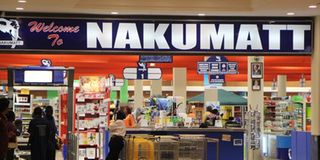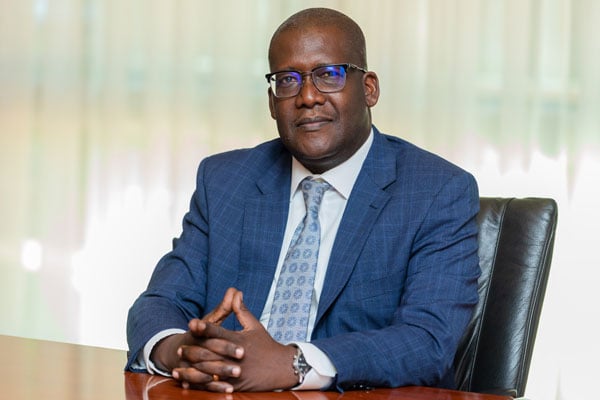Ugandan investors negotiate tough junction into EAC

The closure of Nakumatt is listed as a contributing factor for increased company closures among retailers. FILE PHOTO
What you need to know:
Much as other member states in East Africa have made headway in investing in Uganda, the country is taking a snail’s pace in expanding her footprint across the region. Dorothy Nakaweesi spoke to experts who explain why Uganda is lagging behind.
At present, a child born six-years ago would have graduated from nursery to primary school. But in the same period, Ugandan businesses are still negotiating a tough junction into exploiting the advantage of the East African Common Market (EACCM).
The EAC CM protocol is the second stage of the regional integration process that came into force on July 1, 2010, following ratification by all the partner states: Burundi, Kenya, Rwanda, Tanzania, Uganda and now South Sudan – the newly admitted member state.
The protocol establishment is in line with the provisions of the EAC Treaty. It provides for “Four Freedoms”, namely the free movement of goods; labour; services; and capital, which will significantly boost trade and investments and make the region more productive and prosperous.
Contrary to what their counterparts who have raised their respective national flags high making use of the freedoms through investing into other member states, Uganda is taking baby steps.
Uganda has witnessed an influx of Kenya’s blue print brands such as KCB, Equity Bank, Fina Bank, Insurance Company of East Africa (ICEA), chain retail supermarkets like Nakumatt and Tuskys, Brookside Dairies which bought off the country’s largest dairy corporation.
Tanzania, the region’s second economic power, has also established foot prints in Uganda through Bakhresa Group with brands like Azam Television, mineral water, confectionaries and soft drinks.
Uganda’s presence in other member states is hard to trace apart from a few Simba Telecom outlets which have spread wings into Kenya and Tanzania.
Debate
This begs the big question: Is Uganda more porous compared to her neighbours?
Private Sector Foundation Uganda’s executive director Gideon Badagawa attributes this disparity to Uganda’s hospitable nature.
“Rules, procedures and legal requirements are on a number of instances fairly relaxed, which is good not only for EAC investors especially the small and informal type, but FDI as well,” Mr Badagawa shares.
He adds that Uganda’s challenge is giving the market away under a very porous and weak regulatory environment.
Badagawa adds that Uganda could be opening up too much while her partners are seriously observing the rule of law and enforcing their regulations to the later. One will not just go and set up shop in Nairobi or Kigali without carefully following procedures.
“You know how Tanzania has handled our tour operators at their borders! Unfortunately in Uganda, you can,” Mr Badagawa expressed his concern.
Contrary to Badagawa’s view, Ms Annette Ssemuwemba Mutaawe, the deputy chief executive officer Trade Mark East Africa, says most Kenyan companies which have opened up business in Uganda did not do it because of the EAC integration. It was more of implementing their company policies.
“The integration added value to these companies expansion policies,” Ms Mutaawe shared.
Experts say most Ugandan companies which are big locally are mostly family businesses which have not matured enough to expand or invest in neighbouring EAC member states but would rather opt to produce locally and export to the region.
Mukwano Industries dealing most in fast consumer goods, Samona and Movit who deal in cosmetics and beauty products, are some of the big names from Uganda who have braved the stiff competition to have a presence in the region.
“Why should foreign firms invest in Uganda and no Ugandan companies go out,” Mr Amos Wekesa, the managing director Great Lakes Safaris-a tour company which branched into Rwanda, ponders.
Mr Wekesa shares that the reason why he took a dive into the Rwandan market was because of Rwanda’s focus on tourism and proximity to Uganda.
Wekesa’s observation is that one of the reasons why Ugandan businesses are not investing in other EAC countries is because they are either small or fear investing outside Uganda.
He noted: “Many Ugandans fear to exploit investment opportunities even in some parts of the country but want to concentrate in Kampala.”
Trading
Simba Group –a Ugandan Conglomerate with business interest in telecom, energy, property, agriculture and mining industries with footprints in Kenya and Tanzania is a mobile phone retailer and airtime distributor in East Africa.
Mr Patrick Bitature, the chief executive officer of Simba Group, thinks Uganda’s private sector has a lot to learn in doing business with EAC member countries.
“When we share doing business, they (other member states) benefit from our experiences. It is a good way to diversify and derisk our revenue streams,” Bitature notes.
Bitature advises those who want to invest in other member countries to appreciate different work ethics, transfer skills and resources.
“One must build a reliable management team slowly and carefully. Kenya and Tanzania are bigger markets with more spending power and aggregate demand. Start small with whatever you have and grow,” he added.
However, not all hope is lost like Bitature alludes. Many Ugandans, especially those in the services sector and small traders, hop on buses to Kenya, South Sudan or Rwanda to trade.
Judging from the records, intra-trade between Uganda, Kenya and Tanzania the three member countries’ trade is way more than $5.63 billion (Shs19.1 trillion) according to 2014 records.
Intra-EAC trade is mainly dominated by agricultural commodities such as coffee, tea, tobacco, cotton, rice, maize, wheat flour and manufactured goods such as, cement, petroleum products, textiles, sugar, beer and salt.
Performance
A framework for monitoring and evaluating the implementation of the EAC Common Market Protocol was rolled out in 2012.
Based on that framework, two reports on the implementation of the Protocol have been considered by the EAC Council of Ministers, which noted that the implementation of the Protocol was lagging behind schedule.
To expedite the implementation process, all the partner states have now established National Implementation Committees following a Council directive to that effect, and the Committees have commenced work in their respective territories.
At the regional level, the sub-committee on approximation of laws finalised review of the laws governing companies, insolvency, partnerships, business names registration, immigration, labour and employment.
The East African Common Market Scorecard of 2014 reported the progress towards the implementation of the Common Market Protocol. Developed by the World Bank Group at the request of the EAC Secretariat, the Scorecard assessed partner states’ compliance to the free movement of capital, services and goods over a period of 18 months.
The scorecard notably identified at least 63 non-conforming measures in the trade of services and 51 non-tariff barriers affecting trade in goods. In the area of capital, only 2 of the 20 operations covered by the Common Market Protocol were free of restrictions in all of the EAC partner states.




